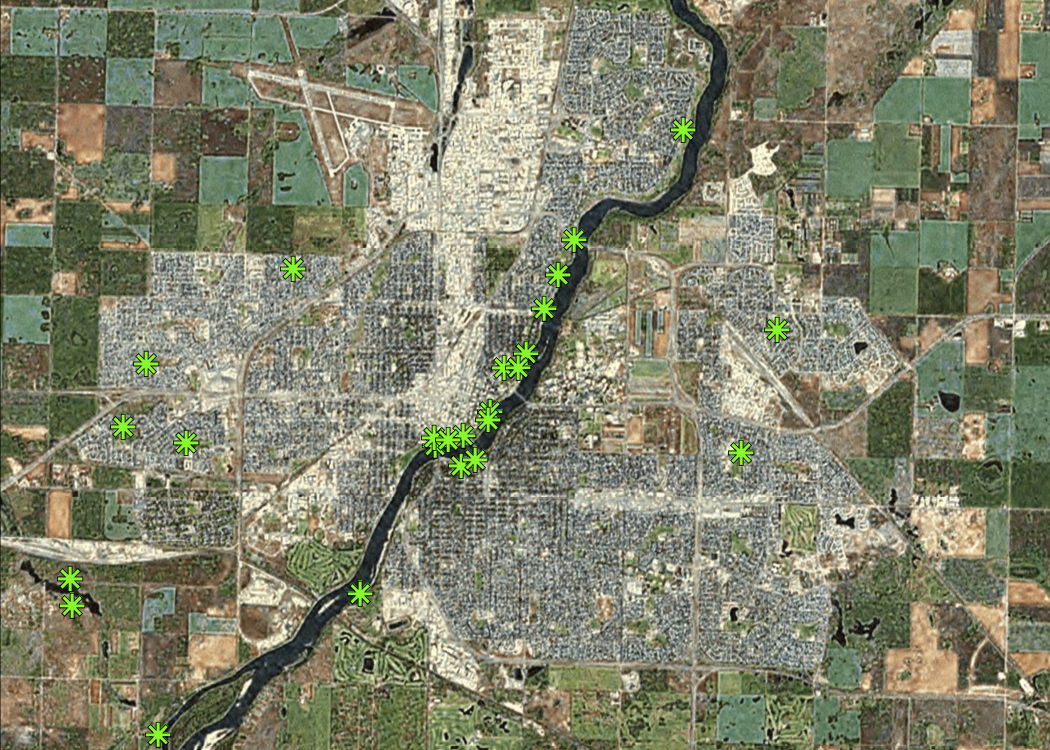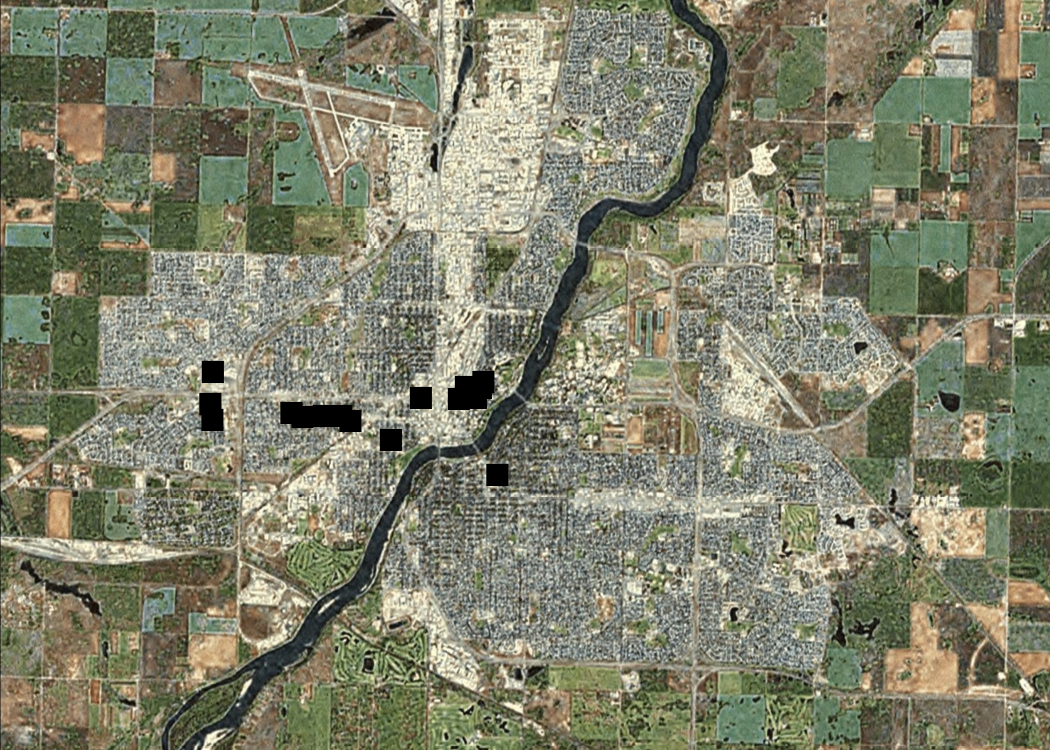THE RESEARCH
Data analysis for the Digital Media Project is focused on the main themes of youth orientations to place, sustainability, community, and identity. While a parallel analysis of key global, national, and regional educational policies will be used to develop implications for environment-related education, including UNESCO and Saskatchewan Ministry of Education policy and curricula.
The project has a central focus on youth developing their digital media skills, “having a voice on local-global sustainability issues important to them,” and exploring their own identities in relation to place and sustainability. Initial qualitative data were also collected in the form of mapping activities, photographs, photovoices, digital videos, focus group discussions and interviews.
The following maps, created using geographic information systems, provide examples of the rich data imparted through the narratives of the youth paritipants. Map 1 illustrates how the 2011 participants liked "green" spaces along the South Saskatchewan River. While Map 2 shows how the 2011 participants disliked "non-green" spaces comprising Saskatoon's downtown business district that extends into the neighbourhoods of Nutana and Riversdale.
Map 1: "Green" Spaces in Saskatoon, Saskatchewan "Liked" by the 2011 Participants.

Map 2: "Non-Green" Spaces in Saskatoon, Saskatchewan "Disliked" by the 2011 Participants.

Overall, the ideas and work of the Digital Media Project youth participants suggests powerful counternarratives to neoliberal expectations of individualized responsibility, free market growth, and easy definitions of “sustainable development.” The initial work of youth participants suggests how research data can help make visible such embedded assumptions and the ways that neoliberal versions of “economic sustainability” rub up against sustainability also considered on ecological and social scales.
The study aims to provide context to what “local knowledge and practices” mean for participating youth in relation to sustainability and educational policy in the province, as well as across other locations.